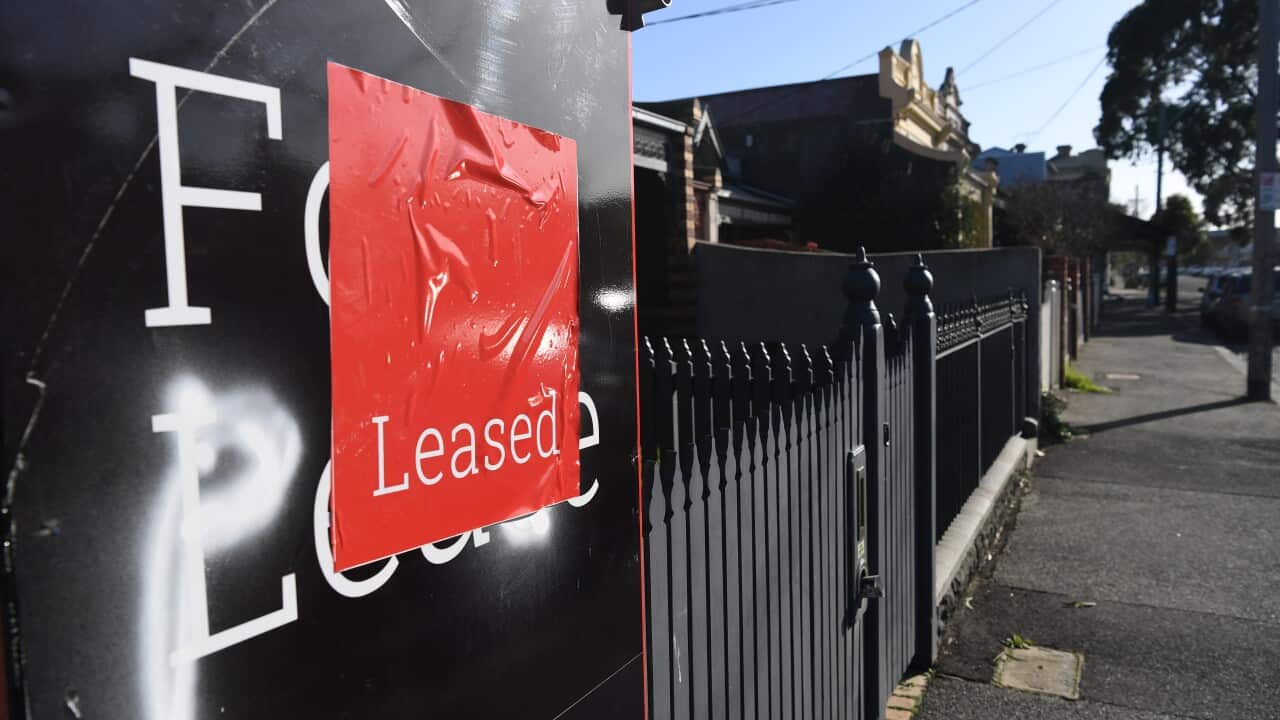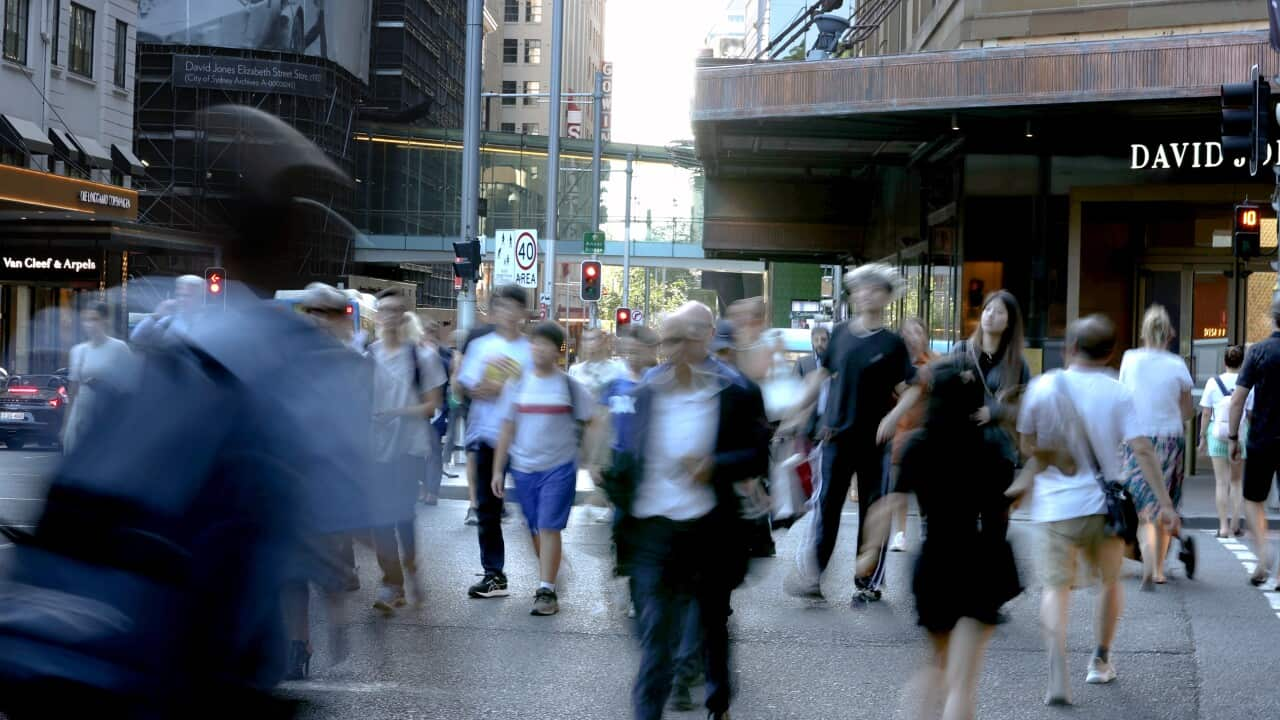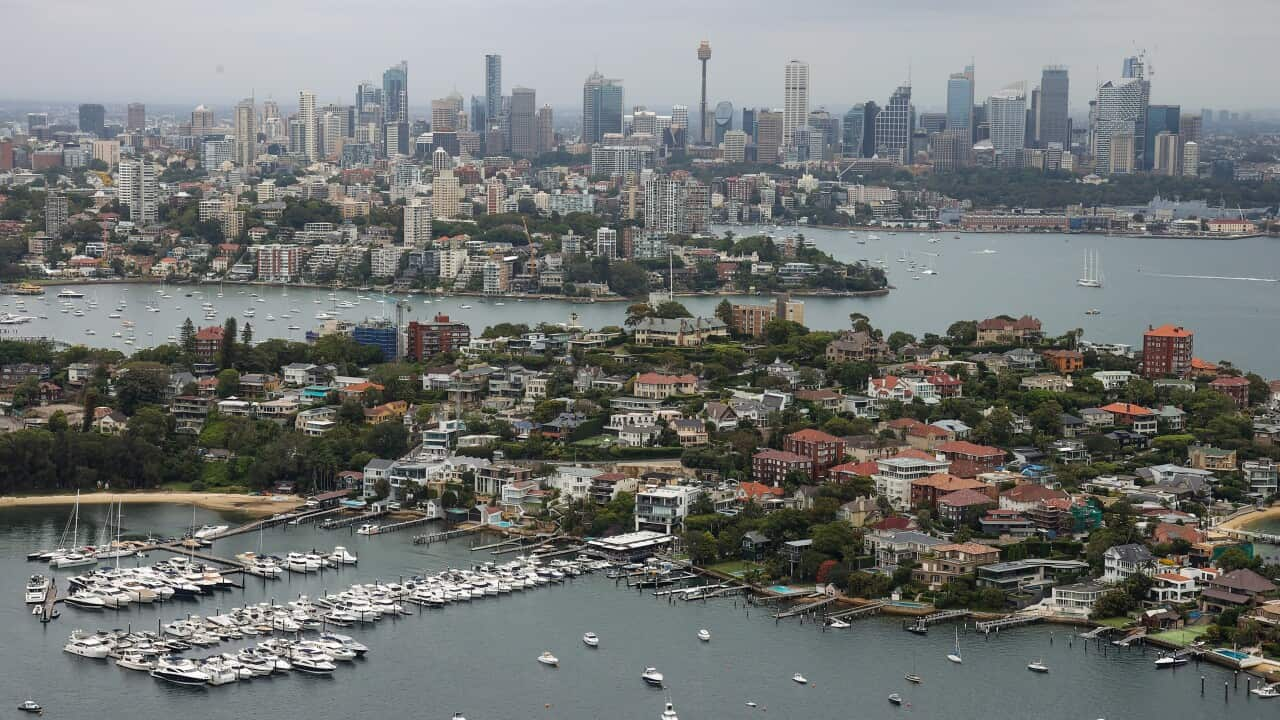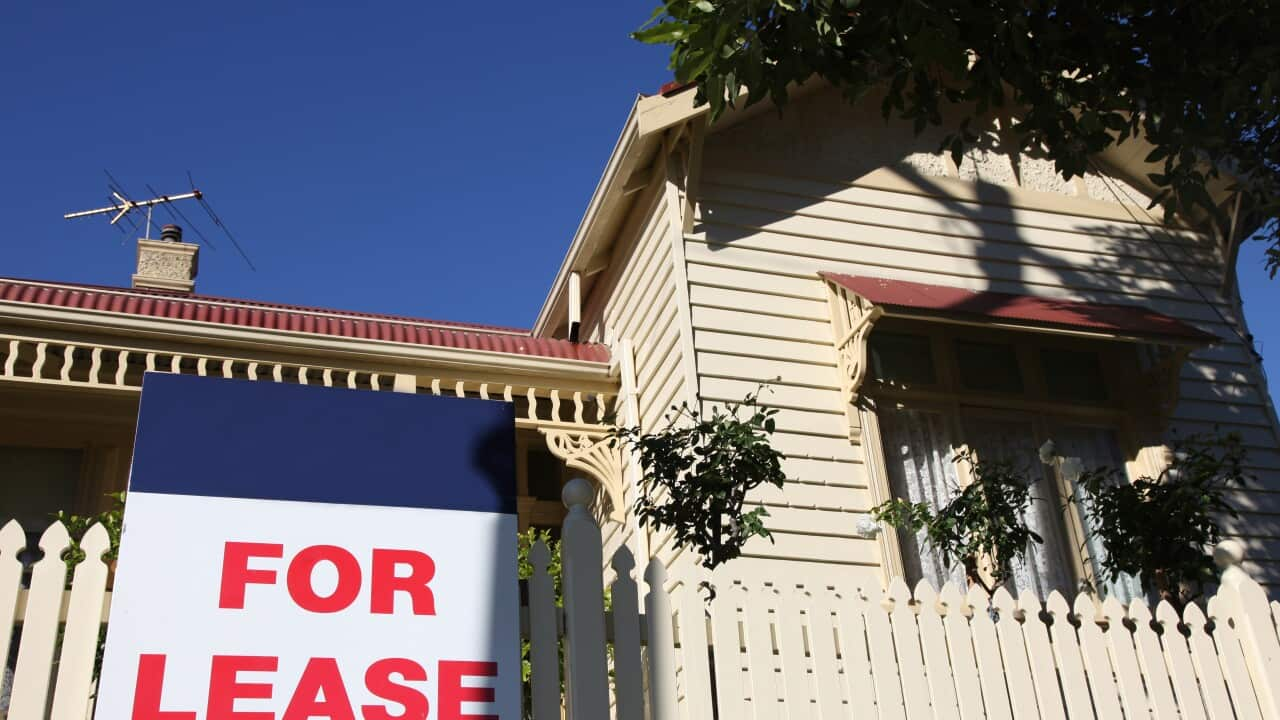Key Points
- The national median rental price rose by 1.8 per cent in the December quarter, reaching $580 per week.
- According to new data, there was a 1.7 per cent drop in approvals for new private-sector houses in November.
- Economists predict there will be no relief for renters in the short term.
According to the latest PropTrack Market Insight report, the national median rent rose by 1.8 per cent in the December quarter, reaching $580 per week.
This is an 11.5 per cent increase compared to the previous year, which means weekly rents are $60 more expensive than they were in early 2023.
Gennadi Kazakevitch from the Department of Economics at Monash University said that, when prices for any product or service rise, economists always look for an increase in demand that exceeds an increase in supply.
"This is exactly what has been recently happening in the rental market," Kazakevitch told SBS News.
"Due to skyrocketing prices for buyers, more people entering the housing market opt for renting rather than buying.
"An even more important reason is increasing immigration. Last year, the country received several hundred thousand newcomers on temporary and permanent visas. They almost always initially rent their first home before considering buying."
In 2024, Kazakevitch expects immigration will be capped at 240,000 newcomers, which he said would still exceed the capacity of the rental market.
Construction delays and reduced housing supply
New data from the Australian Bureau of Statistics revealed a 1.7 per cent decline in approvals for new private-sector houses in November.
Building approvals for the first five months of the 2023-2024 financial year were down compared to the same period in 2022-2023, indicating potential challenges in the construction sector.
Between July and November of 2023, there were 70,900 dwellings approved, compared to 81,954 in the same five-month period in 2022.
The value of total building approvals during November fell by 9.2 per cent in November, after it had risen by 8.1 per cent in October.

New data revealed a 1.7 per cent decline in approvals for new private-sector houses in November. Source: AAP / Joel Carrett
"Effective supply of housing is unlikely to catch up within the next three years," he said.
"We can’t build fast enough based on lack of materials and skilled labour, which makes it more expensive to build. The lag for new housing supply reaching the market when we most need it has been a recurring phenomenon in Australia for decades."
Kazakevitch also partly attributed the decrease in supply to the slowdown in the construction sector.
"During the pandemic, there was, and [there] still continues to be, a severe shortage of qualified labour force and materials in the construction sector," he said.
"As a result, the average time of construction of a residential property has increased from six-nine months to 12-18 months."
Housing Industry Association chief economist Tim Reardon also said the low number of homes approved in 2023 would lead to a slowdown in construction, which has Master Builders Australia's deputy executive Shaun Schmitke "deeply concerned".
"We know the cost-of-living crisis is currently being exacerbated by stubborn inflationary impacts in housing," he said.
"We hope at the top of all government action lists is how to reduce the time and cost pressures around home building."
Is there any relief on the horizon?
Regional renters have experienced some reprieve, with their rents having plateaued at $500 per week since June.
However, Western Australia and Queensland reported the highest non-metropolitan rents at a median of $580 per week — a 16.7 and 11.5 per cent increase, respectively, from the previous year.
Urban renters had a particularly difficult time, as capital city prices rose by 13.2 per cent compared to the previous year, pushing the median rent to $600 per week.

Source: SBS News
In Perth, median rents surged by 20 per cent in a year, making them 66 per cent higher than pre-COVID-19 pandemic levels. The city now has the second-lowest rental vacancy rate after Adelaide.
Even with increases in rental and housing prices, Perth remains more attractive than many other major cities in Australia, according to J Ho.
"It is much more affordable in comparison to Sydney and Melbourne with low unemployment, high quality of life, high quality of housing, and more. We foresee a continued increase in population in WA over the next five years," he said.
According to PropTrack economist Angus Moore, the short-term situation is unlikely to improve.
"Rental markets are extremely challenging for renters, with rents continuing to grow very quickly across much of the country," he said.
"As we head into what is typically the busiest time of year for rental markets in January, renters will, unfortunately, continue to face growing rents."
But Moore says renters may find relief on the horizon.
"The fact that we're starting to see rent growth slow could be a sign that we're going to start to see that kind of filtering out more broadly — maybe later in the year," he told AAP.
"But it's certainly not a guarantee."
Kazakevitch also believes rental prices will continue increasing in 2024, but "hopefully at a slower pace than in the previous year".
"Lowing interest rates and gradually overcoming shortages in the construction sector might help," he said.
J Ho said it could be longer before renters get any significant relief.
"No significant relief is expected within the short term, one-two years," he said.
"Relief will come over the longer term, three-five years, if the government intervenes with well-designed and targeted policies such as substantial increases to in-fill housing density (where people want to live) and encourage the new supply of ancillary dwellings to be built quickly and cheaply."















